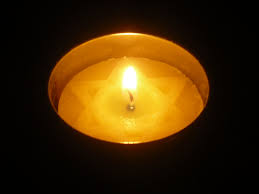…feels different this year. As we prepare to honor Holocaust Remembrance Day (beginning the evening of April 20 through sundown on April 21) an unprecedented global health crisis unfolds. In many ways, tragedies can bring out the best in humanity. However, historically, such crises can also lead to an increase in scapegoating, xenophobia, and hurtful or damaging rhetoric. Today, as COVID-19 continues to affect us all, ADL has documented a rise in these behaviors, specifically against Jewish and Asian American and Pacific Islander communities in the U.S. Teaching about the dangers of unchecked hate and antisemitism, both past and present, remains paramount.
Yet, in these dark times we are hopeful. We believe that one of the most effective ways to combat antisemitism and other forms of hate is through a deep understanding of the history behind these harmful attitudes and how they continue to influence our world today. Yom HaShoah, a call for remembrance, presents a meaningful opportunity for educators to help their students reflect on the past in order to build a positive and peaceful present and future. And, although you may not be in your regular classroom or have the ability to physically make a school trip to a memorial or museum, you can still honor this day and positively impact students with lessons from the Holocaust.
How can we remember the victims of the Holocaust during this turbulent time?
Teach the Human Story
Teaching the human story of the Holocaust is one of Echoes & Reflections key pedagogical principles, as it can have a profound impact on students’ connection to this event. Fostering empathy through personal stories is especially essential during this unsettling period of uncertainty and separation. We encourage educators to commemorate this upcoming day of remembrance by sharing visual history testimony from Holocaust survivors and witnesses with students, all of which are found in our lesson plans. Each testimony is accompanied by guiding questions to support student reflection and comprehension. The testimony of survivor Henry Oertelt in our Contemporary Antisemitism Unit is particularly powerful, as he states:
“I am the prime example of what can happen when no one speaks up against prejudice.”
Poignant words like Henry’s help students understand the importance of being an ally and work to make the world a better place.
Human stories are not only found in visual history testimony, but can also be accessed through works of poetry, art, photographs, and other artifacts from the Holocaust, also found in our lesson plans. These primary sources act as powerful tools to enrich students’ understanding of this history and can compel them to make change.
Engage with The Power of Community
Many of our friends at local Holocaust Museums and Centers, who would normally host in-person commemorative events for Yom HaShoah, have shifted to online ceremonies. We encourage you and your students to connect with others by participating in virtual commemorations offered by these institutions in your area. Additionally, we invite you to join our Partner Yad Vashem, the World Holocaust Remembrance Center’s live broadcast marking the start of Holocaust Remembrance Day on 4/20 as well as their virtual name-reading campaign on 4/21 to record the name reading of a Holocaust victim and share the video on social media.
Even during this deeply difficult time, we still have the power to work towards change and connect with our communities. On Yom HaShoah, by looking towards the past we can support our youth to examine the present and build a more secure and peaceful future. Through remembrance we can inspire positive action.





 English
English